It is no secret that the fire and life safety industry is exponentially growing, and opening up opportunities for contractors, electricians, and inspectors to advance into new territory. According to the Grand View Research Fire Alarm and Detection Market database, the global fire alarm and detection market size was 39.23 billion in 2019 and is anticipating a compound annual growth rate of 8.4% from 2020 to 2027. The expansion is due to more stringent fire and building codes for industrial, commercial, and residential occupancies, the use of addressable systems and technology advancements, fire and life safety awareness, and existing occupancies being brought up to compliance during additions, renovations, and maintenance.
Some electricians and inspectors stray from the fire life safety and low voltage fields because of a lack of interest, experience, or opportunity to work their way into the fire and life safety industry. But, with the expansion of the industry, it’s a perfect opportunity to get involved and reap the benefits of the growth. I find it far easier for an electrician to transition into the fire alarm and life safety industry, than the other way around. In my local jurisdiction, the electrical contractors usually install the conduit, wiring, boxes, termination points, interfacing devices, and the power supply for the systems already. With a little more experience on the systems, wiring, and components, an electrician or inspector could easily make the transition into the fire and life safety industry and eventually grow to enjoy it.
Making the transition can be an exciting and valuable credential in your career trajectory. To start the transition into the fire and life safety industry, it’s important to understand the basics of fire alarm systems. The requirements come out of NFPA 72, National Fire Alarm and Signaling Code, and the NFPA 70, National Electrical Code. For the purposes of this article, I will be focusing on the fundamentals of fire alarm systems in the 2019 National Fire Alarm and Signaling Code, and the 2020 National Electrical Code.
Scope
We can find the scope of the 2019 National Fire Alarm and Signaling Code in Section 1.1.1. The scope of the code is to cover the application, installation, location, performance, inspection, testing, and maintenance of fire alarm systems, supervising station systems, public emergency reporting systems, fire and carbon monoxide detection systems, and emergency communications systems, and all related components of each. During the design, installation, and completion of fire alarm systems, it is imperative that electricians and inspectors are aware and understand the requirements of the National Fire Alarm and Signaling Code, to ensure compliance during construction.
A fire alarm system is identified in Section 1.3.1(1)(a) and (b): Household fire alarm systems and protected premises (local) fire alarm systems. A household fire alarm system is a system of devices that uses a fire alarm control unit to produce an alarm and notifies occupants to evacuate. A protected premises fire alarm system has a system located at the premises.
The 2020 National Electrical Code at Section 90.2(A) states that “This Code covers the installation and removal of electrical conductors, equipment, and raceways; signaling and communications conductors, equipment, and raceways; and optical fiber cables.”
Article 760, Fire Alarm Systems, in the 2020 NEC, covers the installation of equipment and components for fire alarm systems, which include any circuits energized and controlled by the fire alarm system. Examples of fire alarm circuits include initiating devices, notification appliances, waterflow devices, guards tour, and sprinkler supervisory circuits. Some examples of equipment that can be controlled by the fire alarm system, but not powered include smoke ventilation, HVAC, magnetic doors, coiling doors, elevator shutdown and recall, damper controls, and emergency lighting control units.
Section 760.1 explains that any circuit that is controlled by the fire alarm system falls under the scope of Article 760. Any building controlled devices, or life safety equipment that is only interfaced with the fire alarm systems shall fall under the scope of Article 725, Remote Signaling Circuits.
A fire alarm system is a system of components that usually includes a fire alarm control unit, a secondary power source, circuits or pathways, raceways, boxes, initiating devices, notification appliances, and building interfaces.
Control Unit
A fire alarm control unit is the brain of the system and acts as the main control center of the system. This controller receives signals, initiates responses, and transmits signals for an emergency response. The signals initiated fall into three general categories being either an alarm signal, trouble signal, or supervisory signal. The control unit consists of a display panel that relays information and status of the system, codes used for troubleshooting the issues or impairments, and a touchpad to access information regarding the system, reprogram, or restore the system to a normal condition.
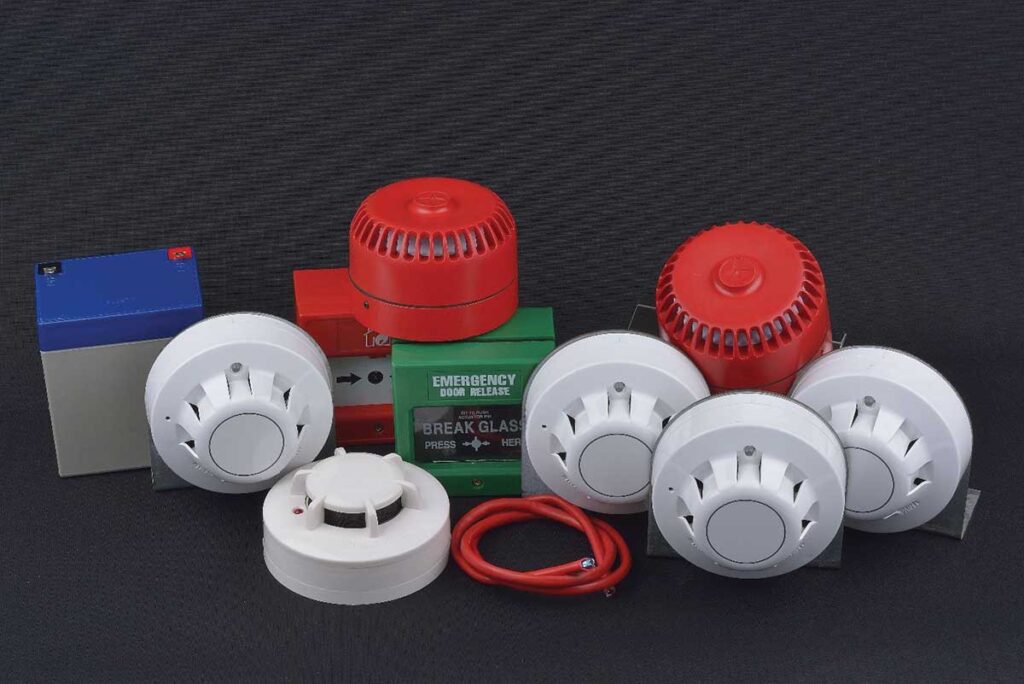
Keep in mind that this control unit is required to meet the installation requirements of the National Electrical Code unless exceptions apply. One important factor is in Section 110.26, Spaces about Electrical Equipment. Working space shall comply with Table 110.26(A)(1)(b) and 110.26(A)(2). Section 110.26(A)(1)(b) allows for special permission for low-voltage systems that do not operate at more than 30V rms or 60V dc; signaling or control systems do not apply.
Ensure that you install the fire alarm control unit with adequate space for technicians who may be working on the system during times of inspection, testing, and maintenance.
Power Supplies
NFPA 72 states in Section 10.6.2, Code Conformance, that power supplies are required to be installed in accordance with the applicable NFPA 70 requirements.
The NFPA 72 requires two independent and reliable sources of power for fire alarm systems: a primary and secondary source. The primary source of power is required to be fed by a dedicated branch circuit that is fed by either an electric utility or an engine, driven where a person that is trained in its operation is on duty at all times, an engine-driven generator or equivalent arranged for cogeneration with an electric utility that is arranged as the primary supply and installed in an approved manner.
Fire alarm system secondary power supplies must have sufficient capacity to operate the systems under normal conditions for a minimum of 24 hours, and able to supply power to all notification devices for evacuation purposes for at least five minutes, unless otherwise noted in sections 10.6.7.2.1.1 through 10.6.7.2.2. The battery calculations shall include a 20% safety margin. Batteries used for fire alarm systems must be marked with the month and year of manufacture, or the installer is required to obtain the date code from the manufacturer and mark the battery. Storage batteries shall comply with Article 480 of the 2020 NEC.
Initiating Devices
An initiating device is a component that originates transmission of a state-of-change condition. Initiating devices can be automatic or manual and can initiate an alarm, trouble, and supervisory signals. Initiating devices monitor for smoke, heat, flame, gas, water flow in sprinkler systems, and manual activation, and then transmit a signal for a response.
Chapter 17 of the National Fire Alarm Signaling Code identifies the application, performance, selection, and location of initiating devices and establishes the minimum requirements when installing the systems. Requirements for single, multi-alarm, and household alarm systems are to be determined in accordance with Chapter 29.
The proper location of alarm initiating devices is also very important when trying to minimize nuisance alarms. When designing or installing an alarm system, we have to take into consideration the placement of the initiating devices to minimize nuisance alarms.
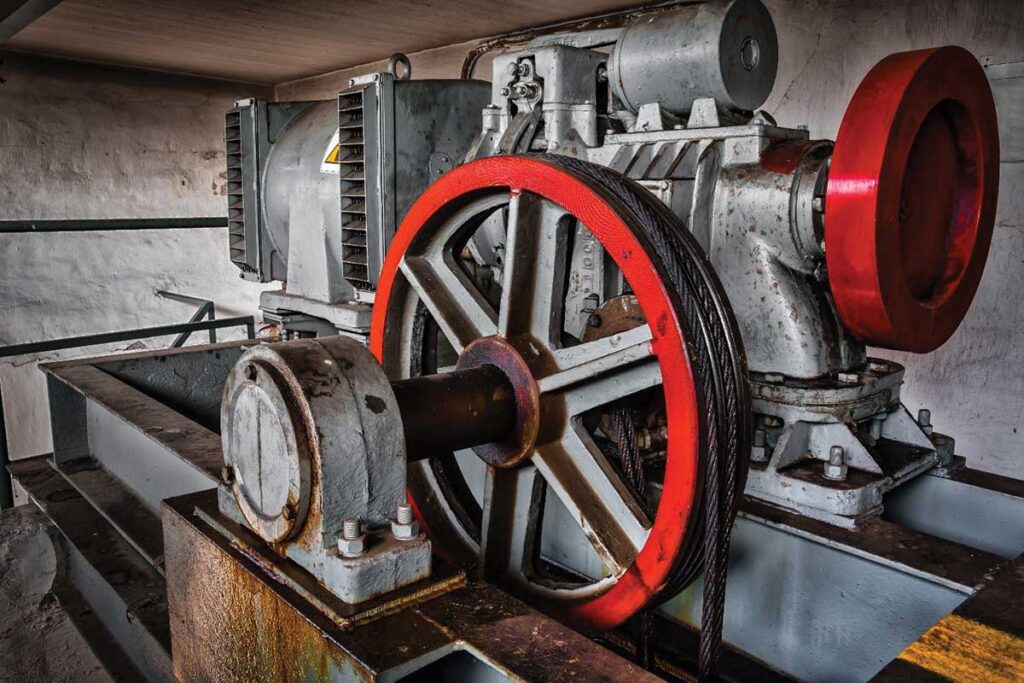
Notification Appliances
Notification appliances are the components that alert and notify the building occupants to evacuate during emergency situations. In order for the notification appliances to do their job, they must be protected from damage, be installed and placed in appropriate areas and meet the minimum requirements for audible and visible characteristics.
Chapter 18 identifies the application, performance, location, and installation of notification appliances used to initiate or direct evacuation or relocation of occupants, or for providing information to occupants or staff to start a required response.
Notification appliances shall have distinctive evacuation signals in accordance with NFPA 72, Section 10.10. The alarm audible signal pattern used to notify occupants to evacuate or relocate from one area to another is required to be a three-pulse temporal pattern.
Building Interfaces
In order for occupants to be safe during emergency situations, buildings are designed to protect and evacuate occupants during emergencies. The fire alarm system is often interfaced with life safety systems in order to provide this safety during evacuation. Some of the systems include emergency lighting transfer switches, elevator recall systems, smoke ventilation systems, door and shutter release, and heating and air conditioning interfaces.
Chapter 21 of the National Fire Alarm and Signaling Code, Emergency Control Function Interfaces, covers the minimum requirements and methods for emergency control functions.
With growing technology and automation systems, often occupancies will have systems interfaced with both fire alarm systems and energy management systems. It is imperative that these systems are installed and tested to be overridden during alarm situations. The last thing you want is for a lower priority system to deactivate a life safety system during an emergency situation.
In Accordance With Article 760
Fire Alarm circuits shall comply with the NEC 760.3(A) through (K). Only those sections of Article 300 referenced in this article apply to fire alarm systems.
Fire alarm circuits that are installed in shafts, hollow spaces, and air handling ducts shall be made to reduce the spread of fire or combustible particles. Openings around electrical penetrations through fire-resistive-walls, partitions, floors, or ceilings shall be fire stopped using an approved means.
When installing fire alarm circuits in wet, damp, or corrosive locations, circuits must be identified for the application, made of the proper material to withstand the environment, and for the operating environment.
Portions of raceways or sleeves are subjected to different temperatures, or when condensation is a factor, the raceway or sleeve shall be sealed with an approved sealant to prevent warm and cold air circulation. Explosion-proof boxes and fittings are not a requirement.
In accordance with NEC 300.17, the number and size of conductors in raceways shall not be more than will permit sufficient dissipation of heat and protect the integrity of the conductors and insulation.
All fire alarm circuits shall be installed in a neat and workmanlike manner. NEC 760.24(A) requires that “cables and conductors installed exposed on the surface of ceilings and sidewalls shall be supported by the building structure in such a manner that the cable will not be damaged by normal building use. Such cables shall be supported by straps, staples, cable ties, hangers, or similar fittings designed and installed so as not to damage the cable. The installation shall also comply with 300.4” and maintain the protection and integrity of the conductors. Paints, plasters, cleaners, abrasives, corrosive residues, and other containments are not permitted on the conductors and may alter the listed properties.
Accessible portions of abandoned cables should also be removed or at least identified for future use by a tag that can withstand the environment that it is installed in.
Fire alarm circuits are also required to identified at all terminal and junction boxes in order to help eliminate nuisance alarms and signals during periods of inspection, testing, maintenance, or repair. It’s always suggested that this identification takes place in an area that cannot be removed or lost; for examplee — don’t identify the box cover, identify the box.
The system circuit disconnecting means shall be accessible to qualified persons, be permanently identified at the systems supplying the source, be identified by a red marking that does not obscure the manufacturers’ listings, and the fire alarm control unit. Where a circuit breaker is used as the overcurrent device, an approved locking device shall be installed in accordance with NFPA 72 Section 10.6.5.4. NEC Section 760.41(A) states that the fire alarm circuit disconnecting means is permitted to be secure in the “on” position, but it doesn’t enforce it. NFPA 72 Section 10.6.5.4 specifies that when a circuit breaker is used as the overcurrent protection device, it shall be locked in the “on” position with an approved device. The NEC simply states that it is a permittable practice, while NFPA 72 states it shall be installed. This is a correlation between the two codes.
The National Electrical Code does require a dedicated branch circuit for non-power-limited fire alarm circuits in accordance with Section 760.41(B). The section includes the same requirements as NFPA 72 but adds the requirement that the disconnecting shall be identified as “FIRE ALARM CIRCUIT,” as well as that the branch circuit is not to be supplied through ground-fault circuit interrupters or arc-fault circuit-interrupters. The power source for power-limited fire alarm circuits shall be either a listed Class 3 transformer, listed Class 3 power supply, or listed equipment marked to identify the power-limited fire alarm power source. This listed equipment can include a control panel with an integral power source, a listed circuit card, or current limiting impedance.
Be cautious when mixing fire alarm circuits, power-supply circuits, remote signaling circuits, and communications circuits. The requirements found in NEC 760.136 (A) through (D) will apply.
Mixing class 1 and non-power-limited fire alarm circuits shall be permitted to occupy the same cables, enclosure, or raceway without regard to if the voltage is alternating or direct current, as long as the conductors are insulated for the maximum voltage of any conductor in the raceway or enclosure.
Power-supply and fire alarm cables are permitted in the same raceway or enclosure when functionally associated and connected to the same equipment.
Use caution when installing power-limited fire alarm circuits with non-power limited fire alarm circuits, power, light, class 1 remote signaling circuits, and medium-power network-powered broadband communications circuits. It is required that the circuits shall be separated from the power-limited fire alarm circuits by barriers, separate raceways within enclosures, or associated with systems within an enclosure. It is also required that the power-limited circuits are installed in a manner that maintains at least 50 mm (2 inches) of separation from all light, power, and class 1 circuits, or unless installed in metal-clad, sheathed, or underground feeder cables in order to reduce interference with the circuits in accordance with NEC Section 760.136(G).
Fire alarm cables installed in elevator hoistways shall be installed in rigid metal conduit, rigid nonmetallic conduit, intermediate metal conduit, liquidtight flexible nonmetallic conduit, or electrical metallic tubing.
In Conclusion
Although the code and installation requirements for fire alarm systems can seem difficult to understand at first, anyone can learn them with initiative and time. Remember, the fire and life safety industry is full of potential, expanding in growth, and can provide a new and innovative future for contractors, electricians, and inspectors alike. Various state and national certification programs can get you started in the right direction to start your venture in the industry.
References
- National Fire Alarm and Signaling Code. https://www.nfpa.org/Assets/files/AboutTheCodes/72/72-13ROPDraft.pdf
- NPFA 70, National Electrical Code, 2020.

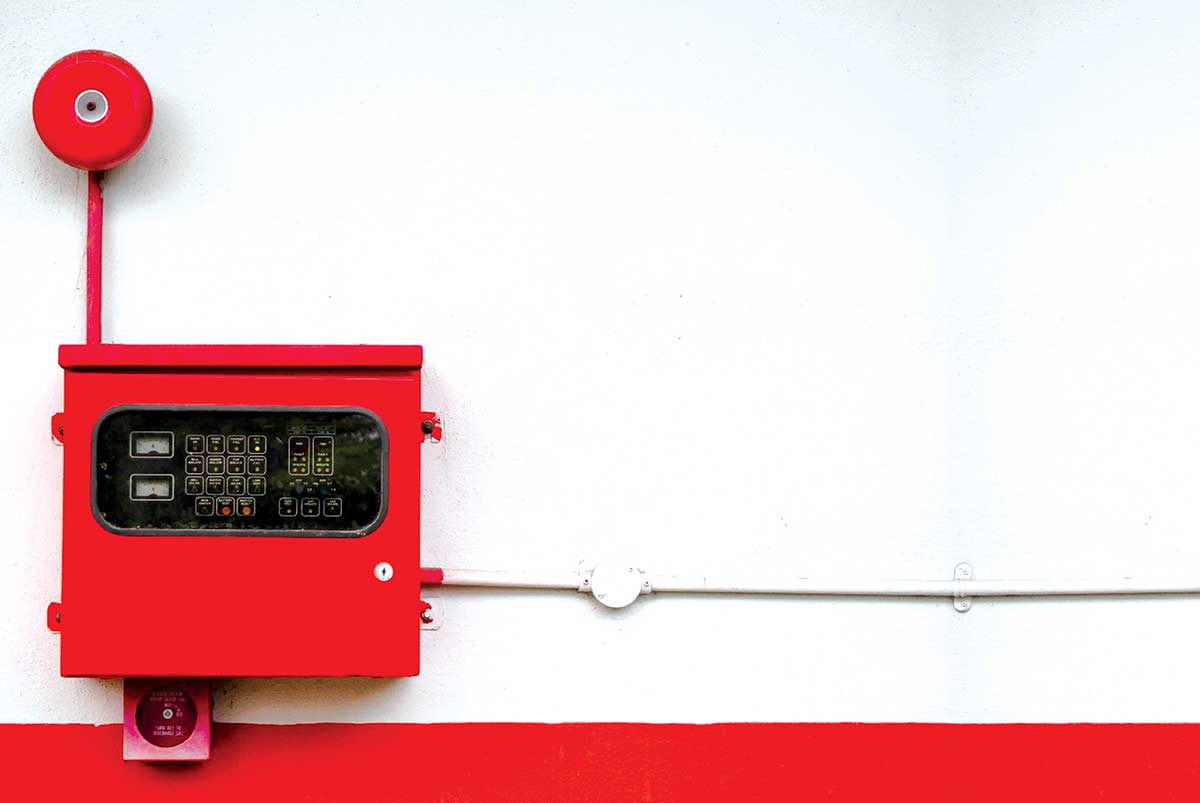







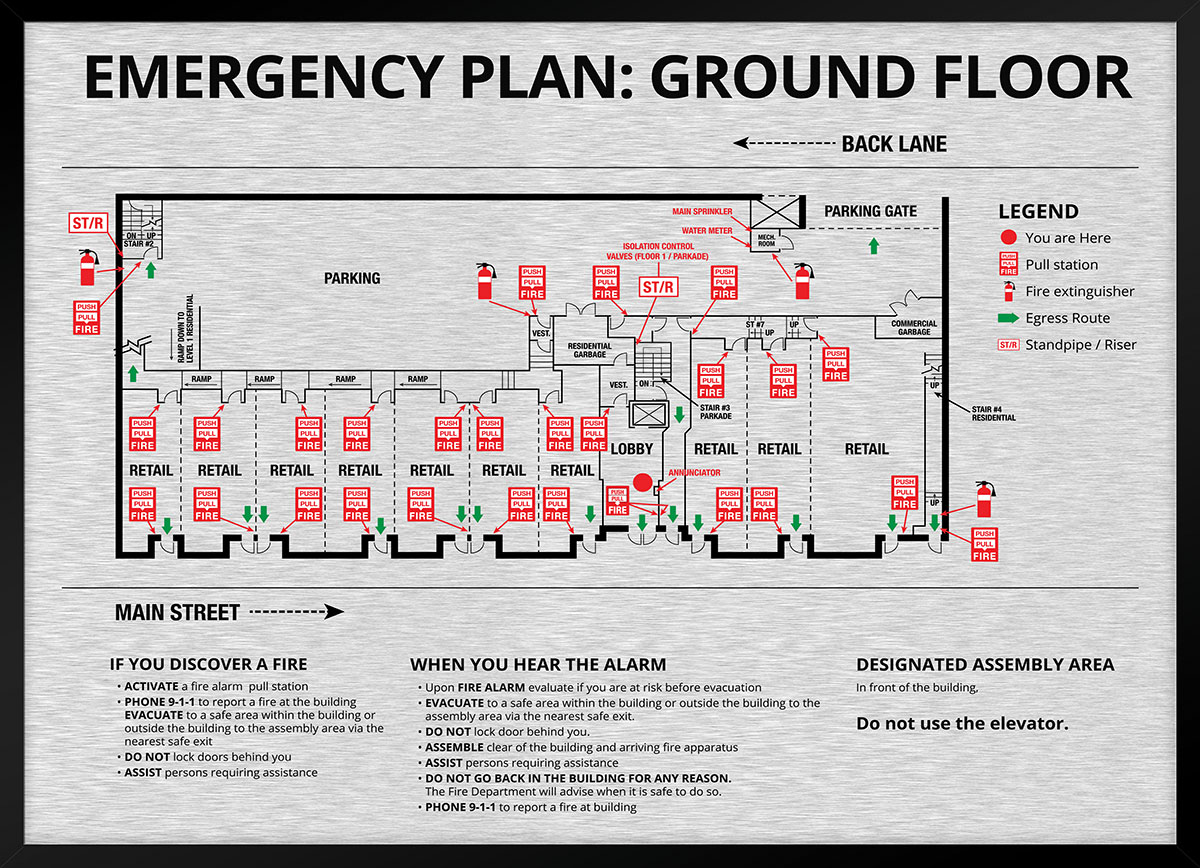
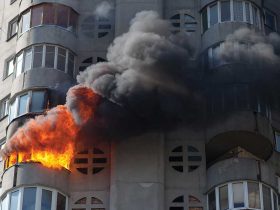
Find Us on Socials